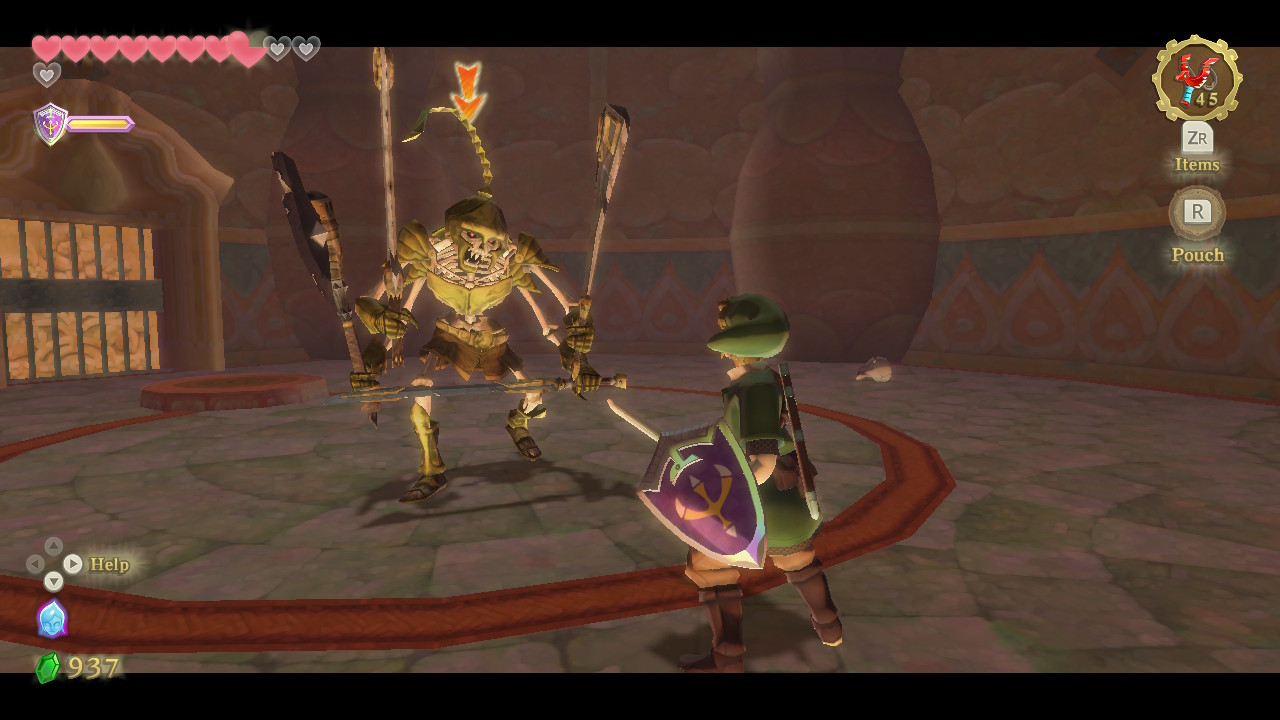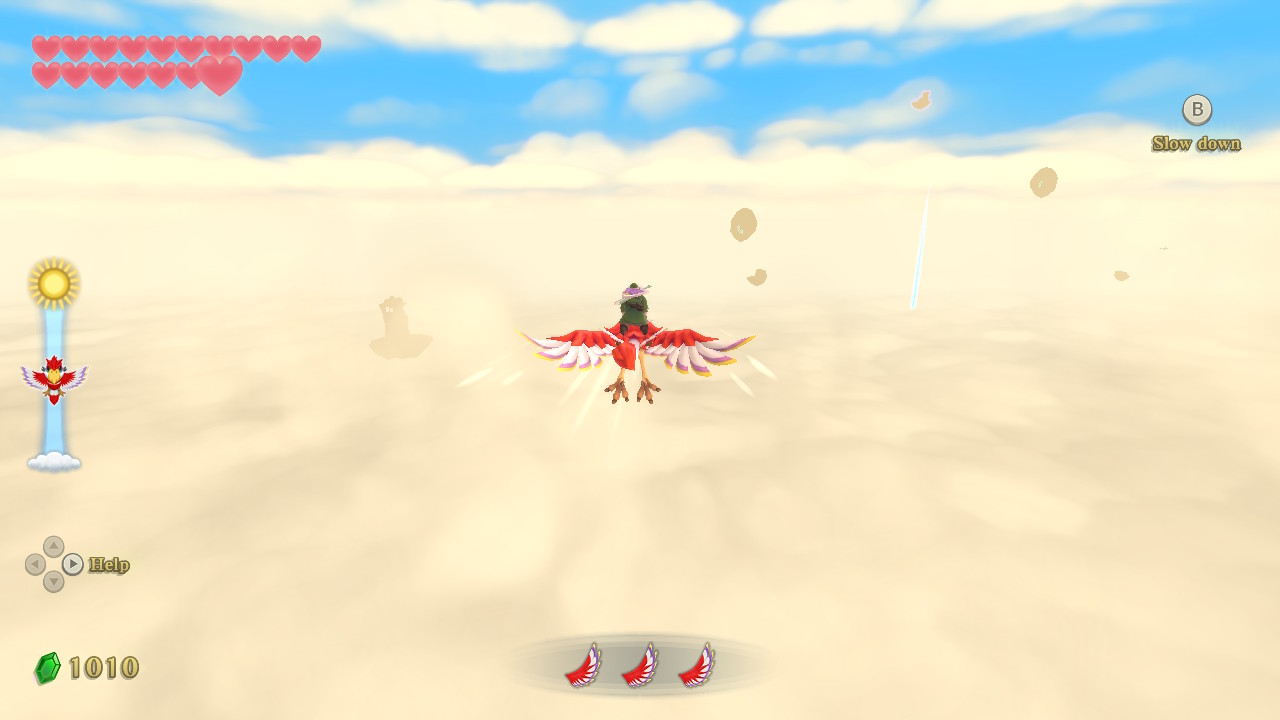Search
[{{{type}}}] {{{reason}}}
{{/data.error.root_cause}}{{{_source.title}}} {{#_source.showPrice}} {{{_source.displayPrice}}} {{/_source.showPrice}}
{{#_source.showLink}} {{/_source.showLink}} {{#_source.showDate}}{{{_source.displayDate}}}
{{/_source.showDate}}{{{_source.description}}}
{{#_source.additionalInfo}}{{#_source.additionalFields}} {{#title}} {{{label}}}: {{{title}}} {{/title}} {{/_source.additionalFields}}
{{/_source.additionalInfo}}- Details
- Category: Switch
- By Tyler Ferguson
- Hits: 3023
The Legend of Zelda: Skyward Sword HD (Switch)

The Legend of Zelda: Skyward Sword HD
Developed By: Nintendo
Released: July 16th, 2021
Available On: Switch
Genre: Adventure, Action
ESRB Rating: E10+ for Animated Blood, Comic Mischief, and Fantasy Violence
Number of Players: 1 offline
Price: $49.99
(Amazon Affiliate Link)
The Legend of Zelda had been going strong for twenty-five years when Nintendo released the Legend of Zelda: Skyward Sword on the Nintendo Wii. This entry’s biggest feature was its controls, which used motion for nearly everything. This anniversary title drew a lot of criticism, mostly due to its controls, and probably became the most hated 3D Zelda game. Ten years have passed, and Nintendo has attempted to redeem Skyward Sword with an enhanced Switch port called the Legend of Zelda: Skyward Sword HD. I never played the original, but I am very familiar with its issues.
Skyward Sword takes place at the beginning of the Zelda timeline, before the founding of Hyrule. People live above the clouds on an island known as Skyloft, where the land below is seen as just a myth. One day Zelda, Link’s childhood friend, is knocked below the clouds by a tornado. Later, Link meets Fi, a spirit that resides in a sacred weapon known as the Goddess Sword. Link learns from Fi that he’ll need her help to find Zelda, who is somewhere on the surface. The story never becomes too complex, but I found it exciting nonetheless. The best part of the story is that it shows the origin of several important elements in the series.
While still a 3D adventure game, the Legend of Zelda: Skyward Sword is structured very differently from other Zelda games. There are three regions of the surface where the player explores relatively linear areas to reach dungeons. These areas are connected by the sky, which can be traversed by riding a giant bird known as a Loftwing. There are quite a few islands in the sky, but only a few of them house anything notable, which feels like a missed opportunity.
Several mechanics that would later inspire Breath of the Wild are present here. The player can sprint at the cost of stamina. Other actions, like rolling and spin attacks require stamina as well. Shields can take damage and break if misused, though I forgot about this feature halfway through, as the player can obtain a shield that repairs itself over time. These shields, along with other items, such as and bottles, are kept in a limited inventory, forcing the player to decide what items to bring along for the journey.

Strong Points: Fun story that serves as the origin of the series; changes in combat that force the player to consider how they swing their sword; option for button controls
Weak Points: Numerous sections that force gimmicks upon the player
Moral Warnings: Killing monsters; infrequent blood particles; female character that flirts with Link; goddesses and demons; mentions of reincarnation; uses of magical potions; option to consult a fortune teller; a few instances of gross humor
Skyward Sword's best change is its combat. Instead of being able to mash a button to defeat enemies, the player needs to swing their sword in precise directions. For example, an enemy might block an attack from the left, so the player would have to swing from the right. Having to think about which direction to swing makes most enemy encounters feel like miniature puzzles.
Most actions, including combat, riding the Loftwing, and even some aspects of movement, use motion controls. These controls are unfortunately very unreliable, though. The player sometimes needs to thrust their sword forward, but the action is very delayed, making some early enemies seemingly impossible to defeat. The Loftwing is controlled by tilting the right Joy-Con, but I could never get the hang of it and would often find myself at the bottom of the sky.
The poor motion controls would greatly lower my opinion of Skyward Sword, but Nintendo added an option for button controls in this version. Some actions seem strange at first, including the sword, which is controlled with the right stick, but the player should get used to them early on. Since these controls are much more responsive, mistakes are always the fault of the player, rather than the controls.
Along with an option for more traditional controls, the player can now freely control the camera. When using motion controls, the camera is controlled with the right stick as you would expect, but since Button controls use the right stick to control the sword, the player needs to hold L before moving the right stick with this control scheme.
In the Wii version, Fi became infamous for how often she told the player obvious information and spoiled the solutions to puzzles. In the Switch version, however, most of her hints are now optional, with a sound effect playing whenever she has a new hint. Unfortunately, she still forcibly gives some useless hints, and there is one puzzle that she gives the solution to, but she’s not as annoying as in the original version, and I ended up really enjoying her as a companion.
While the motion controls were the biggest problem with the original version, another issue was that the player frequently had to play through sections involving gimmicks, with the stressful Silent Realms being the most notable example. These sections, which often required stealth, were frequent enough that they really hindered the game. Because of this, I expected them to be adjusted in this release, but they unfortunately aren’t. If you hate stealth as much as I do, you’ll be quite disappointed in this.

Higher is better
(10/10 is perfect)
Game Score - 78%
Gameplay - 14/20
Graphics - 6/10
Sound - 10/10
Stability - 4/5
Controls - 5/5
Morality Score - 75%
Violence – 5.5/10
Language - 8/10
Sexual Content - 10/10
Occult/Supernatural - 7/10
Cultural/Moral/Ethical - 7/10
Skyward Sword HD retains the fantastic watercolor art style of the original, in which distant objects look like paintings. Textures have a higher resolution and the HUD is much cleaner. The NPC models haven't aged well, but the main characters look fine. Skyward Sword HD also runs at a nice 60 frames-per-second, rather than 30. The orchestral music is unchanged, but for good reason. It’s one of the best soundtracks in the series.
The infamous late-game glitch that soft-locked save files is fixed in this version, though there is a new (albeit not as devastating) glitch to take its place. In the third dungeon, one of the puzzles can soft-lock seemingly at random, forcing the player to reload their save.
The violence is what you would expect from Zelda; enemies disappear when defeated and there isn’t any blood, save for one scorpion boss, which has barely noticeable blood particles. Enemies include monsters, skeletons, and in rare cases, zombies. There is a girl who hits on the player, with an option to express an interest back, much to her father’s dismay. More than other Zelda games, Skyward Sword’s story has a lot to do with goddesses and reincarnation. There are also a few examples of demons, including a sidequest where the player can try to help one become a human. The player can pay a fortune teller to help reveal hidden items. There is also a sidequest where the fortune teller’s crystal ball breaks and the player can retrieve a replacement. There are a few cases of gross humor, including a bird enemy that defecates to attack and a sidequest where the player needs to find a piece of paper to give to someone to use as toilet paper.
Alongside Skyward Sword HD, a new twenty-five-dollar amiibo released that allows the player to quickly travel to and from the sky, which has understandably made people upset. I don’t own this amiibo, but since it only allows for skipping to the sky and back to the player’s last position on the surface, rather than allowing for proper fast travel, I don’t feel like I’m missing out on a super useful feature.
The Legend of Zelda: Skyward Sword HD, with its origin story and direction-based combat, is one of the better games in the Zelda series. If the motion controls prevented you from enjoying the original, you’ll most likely enjoy this enhanced port. Though if you did like the motion controls in the original, the other changes probably aren’t worth double-dipping for. It is a shame that the annoying gimmicky sections are unchanged, but they don’t ruin the experience. If you are concerned about the moral issues, they are no different from other entries in the series. It’s also worth noting that the original version was fifty dollars, as opposed to the sixty-dollar price tag of this version.
-Tyler Ferguson




